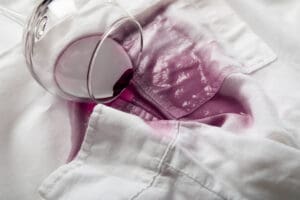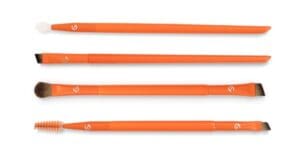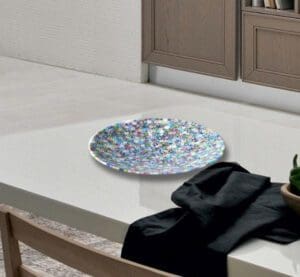For years since the early 2000s, straight hair became a well-coveted look thanks to Asian stars with perfect tresses hanging from their shoulders. As the style made its way from Southeast Asia to Europe and eventually the United States, it is now assumed straight locks is an iconic look. For girls worldwide—especially those with naturally wavy or curly hair—their straighteners have been their best friend.
If you’re one of them, are you aware of the extent of damage it gives to your hair? Contrary to the belief that constant straightening makes your strands healthier and fuller, it actually makes them duller and drier as time passes by. As such, you’ll see the repercussions when you hit a 6-month mark of daily straightening. Don’t let it get to that point, and start straightening your hair the natural way!
Reasons Why A Straightening Iron Should Be Avoided
1. Severe Dehydration To Your Roots And Tips
Our hair holds moisture even on the tips, despite how dry it looks. When you use your straightener, have you noticed smoke rising from your strands? That’s actually the evaporation (read more) of the moisture held by your strands. The iron straightener removes all of it to secure a style that stays in place.
What happens when you frequently eliminate all moisture from your hair? It will become damaged, frail, and the ends will look limp and lifeless. Overwashing will not do the trick either, as constant interaction with shampoo can also cause hair fall and other severe damages. The only way to avoid this is to avoid your straightener altogether.
2. Even More Frizz
If you’re trying to get rid of frizz with heating methods, you’ll find yourself with a worse case of it than before. As your strands begin to dry up because of your routine, it actually doubles the frizz instead of eradicating it. It will go away once you’ve straightened your hair, but the frizz won’t be leaving anytime soon. It will be there to stay, and you’ll have no choice but to cut your locks if you want them gone.
3. It Causes Split-ends And Breakage

Your locks are made out of hydrogen bonds and keratin, which can be broken down through heating tools like curling or straightening irons. This also causes you to strip your strands of natural oils and proteins that would have helped with the dryness. The reason why it’s essential to know how to straighten your hair without heat is precisely because of this. Heating can provide a temporary solution with a lifetime consequence.
4. Permanent Hair Loss/Slow Growth
Your hair’s constant exposure to both chemicals and heating tools won’t be remedied by stopping the routine a year too late. Once the damage has been done, it can lead to permanent balding or prolonged growth. Even then, what grows back won’t be the same as the one you had before styling and straightening it. Before you position that heating tool near your strands, think of the future and what you’ll end up with.
Tips To Straighten Hair Naturally
1. Brush Your Hair While It’s Still Damp
Conventional tips will tell you to avoid this step, but we actually found loopholes in this claim with just a change of tools. After you wash, shampoo, and condition your hair like usual, let it sit to air dry for at least 5 minutes before brushing with a wide-tooth comb. Brushing this way will prompt your locks to become straighter with less frizz.
Start by dividing your hair into sections and gently combing through it. If you encounter any tangles, detangle them using your fingers but be very gentle. Repeat this step until your locks are dry, and enjoy straight non-frizzy locks! Pro tip: if you opt for more professional care, use brushes or combs made specifically for wet or damp strands. These products are gentle and thorough and do not cause tangles or split-ends.
2. Use Aloe Vera Gel

Aloe vera has been known for its many healing properties for centuries. It’s a great way to treat sunburn because of its naturally relaxed feel on the skin and also helps soothe accidents in the kitchen, like scalded skin.
Another use for this plant has been focused more on the scalp and hair. Aloe vera had been claimed to encourage growth, prevent and cure dandruff, and moisturize the follicles and strands. It also contains the necessary vitamins (A, C, and E) for healthier locks. Stronger anatomy and healthier roots can result in better-looking, straighter locks.
To apply aloe vera, buy gels from the pharmacy or scrape off some from the plant itself if you have some. Apply on the scalp and strands thoroughly, let it sit for half an hour, and rinse with water and mild shampoo. Do this religiously thrice a week. Take note of any allergic reactions (like severe itching, forming bumps on the scalp, or excessive falling of hair) and stop using the gel immediately.
3. Make Use Of Milk
Milk has two proteins: casein and whey. Casein is metabolized for more extended periods, making it ideal for bedtime, while whey is used quickly and is perfect for workouts and intense exercises. Both have roles for the immune system, bone structure, and hair benefits. The whey in milk can strengthen your locks and repair damaged strands.
After your usual shampoo and conditioner, use warm milk by dipping cotton in a cupful and pat it all around your scalp. After covering your whole head, you can rinse your strands with the remaining milk, let it sit for an hour, and finally rinse it away with water. For better results, use natural cow’s milk, almond, or coconut milk.
4. Banana-honey Infusion Twice A Week

Banana and honey are natural ingredients that have significant benefits for the hair. Banana provides intense hydration for dry, damaged strands from heating tools, while honey activates repair mechanisms and coats the locks with an antibacterial layer. Both of them can promote your strands to grow healthier and fuller.
Use one ripe banana and mash it thoroughly. Afterward, add a tablespoon of honey and place them in the blender. Let it run until you have a viscous paste. To know if the infusion is ready, check the paste’s consistency. If it’s still more liquid than a thick paste, you either need to add one more banana or blend it for another 10 minutes.
Apply this on your scalp and locks liberally and seal with a shower cap for at least an hour. Afterward, rinse thoroughly with water and a mild shampoo.
5. Olive Oil And Eggs
Olive oil is the to-go for advocates who have thick, unruly hair. Olive oil keeps it sleek and tamed with its minerals and natural moisturizing effect. On the other hand, Eggs help replenish your locks’ protein content, which both repairs and strengthens them. B vitamins found in it are the reason for hair texture, which provides a straighter, fuller hair without touching your heating tools if with enough for these vitamins.
To make this olive oil plus eggs ask, whisk up two eggs and add a tablespoon of olive oil. After you’ve whisked them thoroughly, go about your usual shampoo and conditioner, and leave a warm wet tower on your scalp for 3 minutes. This will open up the pores and let the mask clean all the dirt clogging them up.
After applying the mask thoroughly, seal it with a shower cap, keep it on for a minimum of 1 hour, and rinse with cold water. Do this twice a week for excellent results!
6. Quick Fix: Apple Cider
This choice can be for those with little to no time for the ones above. Apple cider is a common way to straighten your strands naturally, as it mainly affects hair texture.
Take half a cup of apple cider vinegar and mix a cup of water into it. Apply it as a spray or rinse your locks with it after your usual shampoo and conditioner. Let this sit for a few minutes before rinsing it with lukewarm water. This easy method can help you with frizzy, unruly locks and naturally straighten them as you desire.
Featured Image by melancholiaphotography from Pixabay










